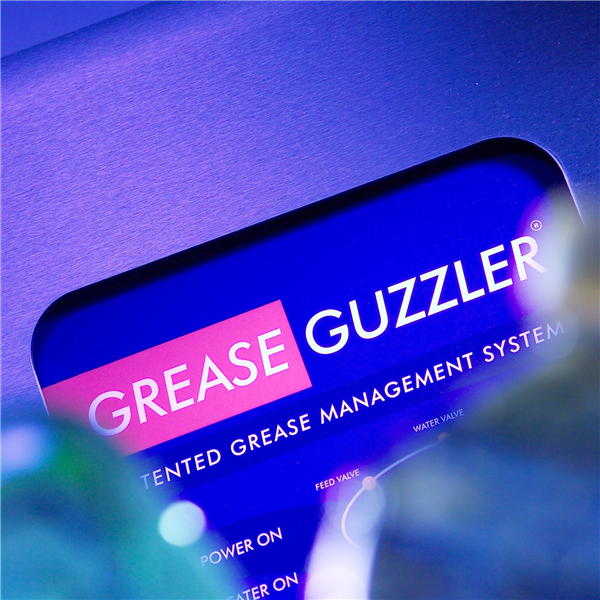
The UK’s eating habits have changed dramatically over the past decade, with many people now eating out much more frequently, allowing the food and drink industry to boom exponentially. Unfortunately, this has unearthed concerns that, while fat, oil, and grease (FOG) do not appear harmful on the surface. When cooled, they congeal, harden, and stick to the inner lining of drainage pipes, restricting wastewater flow and causing blockages. Over 75% of all sewer blockages in the UK are caused by FOG contamination, costing the country millions of pounds a year in repairs.
In response to blockages and costs, utilities have now made it a requirement for commercial food establishments preparing food for the public or staff to install grease traps. Such venues include – but are not limited to – hotels, schools, restaurants, pubs, cafes, sports venues, hospitals, universities, airports, retirement homes and many more.
Grease traps, in simple terms, are boxes positioned within the wastewater drainage system. Fitted after the sink or other appliances to intercept and retain fat, oil and grease before it discharges to the foul sewer system. There are a range of grease traps and interceptors available, depending on whether they are situated above ground, below ground, inside the kitchen, or outside the building, as well as space available for the unit.
This blog has been created to assist you to make sense of the range of grease traps in the market, as well as the legal obligations around grease management and FOG (fat, oil and grease) Control. Looking specifically at grease interceptors fitted below ground so that you feel better informed, and less overwhelmed when deciding on which solution would be best for you.
What Is a Below-Ground Grease Trap?
Below-ground (in-ground) grease traps, as the name suggests, are generally buried underground, and as a result, benefit from larger capacities than their above-ground (passive) counterparts. They are typically made from metal, concrete, fibreglass, or PVC. Many business owners prefer this type, as they are far more aesthetically pleasing, and provide a much cleaner look for their establishment, as they are almost completely hidden. Be aware that these types of grease traps require more work during installation, given that metal or large concrete separators have to be lifted in place by heavy machinery.
Trapzilla
The Trapzilla is a below-ground grease trap that provides advantages that a traditional below-ground grease trap simply does not.
Traditional grease interceptors frequently suffer separation efficiency losses when grease layers exceed 25% of the internal liquid depth volume. This is why older grease interceptor models have very large footprints – to provide an adequate operating service period before reaching 25% full. The unique design of our Trapzilla model maintains peak separation efficiency well past the 25% full threshold, allowing it to store up to 90% of its own volume in fats, oils, and grease in a small footprint.
The most powerful feature of the Trapzilla is that it has a horizontal baffle that prevents thermal inversion. Thermal inversion occurs when warmer effluent entering the machine causes colder fluids to circulate the grease trap. This reverses the process of separation, making the grease trap process far less effective.
The Trapzilla’s patented ‘thermal inversion control’ confronts this issue, as its design retains high-separation efficiency, and high grease capacity within a small footprint, making it ideal for space-constrained food service establishments. Trapzilla can hold more than 80% of its own volume in grease and its robust construction withstands both low and high PH outlasting traditional concrete or metal interceptors. This underlined with a limited lifetime warranty, combined with the high flow rates and small size allows for Trapzilla to be installed in almost any space, even basements.
Lipumax
As with our Trapzilla grease trap range, the LipuMax P Series is also a below-ground grease separator. Owing to its expert construction from compact and rigid roto-moulded polyethylene, the LipuMax has a structural stability that is guaranteed for 50 years, which is one of the longest guarantees offered out of all available models.
Aqua Mundus offers four versions of the LipuMax P series, each with slightly different levels of automation. The main difference between the models is the level of manual labour required to operate and maintain each of the interceptors. Their specific differences are outlined further on our website.
There are key features and benefits to be gained from the LipuMax series. The first is that they are fully BS EN 1825 certified. Secondly, they have a superior level of stability, as they have a unique built-in rib structure, which can be keyed into the surrounding concrete, and a buoyancy-proof shaft that extends to the top edge of the manhole cover. Furthermore, the LipuMax has the highest level of construction of all available models, and in addition to offering resistance to upwelling, the top section of the separator permits simple onsite height adjustment – making them suitable for full load classes A15 to D400 – reducing your requirement for slab-reinforcement.
Superior Grease Trap Solutions by Aqua Mundus
Currently the UK’s leading independent grease trap and wastewater management specialist, Aqua Mundus has a wide range of high-quality solutions for you and your business. We install and service an extensive range of below-ground grease traps from trusted brands, all designed to be a valuable investment for you for years to come.
To discover more about our below-ground grease traps, site surveys, or other services we offer, please contact us! We’d love to hear from you and would be more than happy to help and start with free impartial advice.